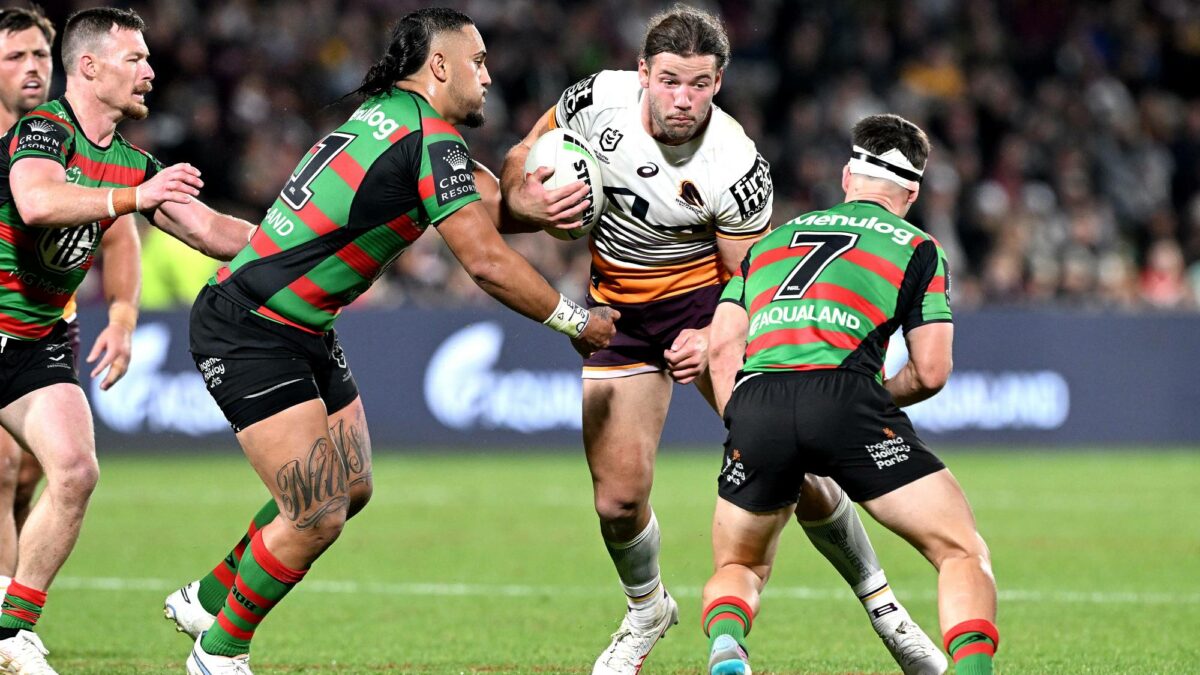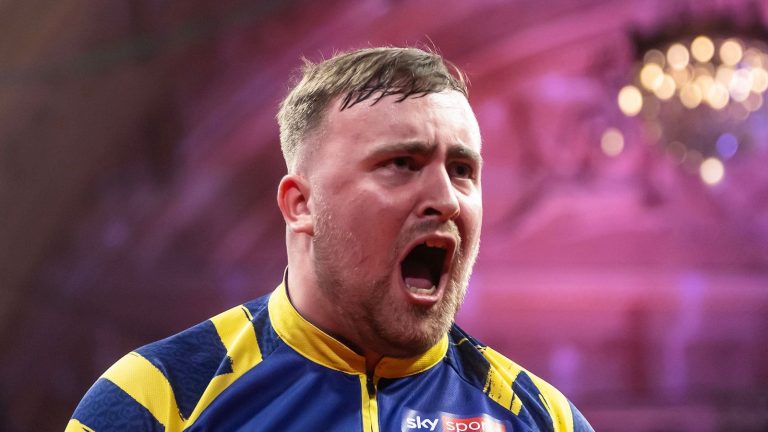The Brisbane Broncos burst into the 2025 season with renewed hope under Michael Maguire, but early wins have come against weak opposition, and back-to-back losses have exposed deep structural flaws.
This week’s clash with the ladder-leading Bulldogs shapes as a critical test of their credentials.
Here are five key changes Maguire needs to make, and the persistent issues that show why Brisbane still won’t be lifting a trophy this season.
1. Reinstate Carrigan as an 80-minute lock
Carrigan must return to playing full-time at lock. His short passing game is crucial for linking up the forwards, and his ability to dig into the line is vital for straightening the team’s sweep plays. Wasting Carrigan on low-impact kick-off hit-ups underuses his strengths, a role better suited to a workhorse like Corey Jensen.
This shift would also improve Brisbane’s interchange rotation. They currently carry a hooker, lock, and edge forward who can’t play 80 minutes, which strains their interchange and forces Payne Haas into longer stints.
Letting Carrigan go the distance in his preferred role would free Haas to play high-impact, 30-minute bursts to open and close games. Despite his motor, Haas’s current workload is unsustainable — reducing his effectiveness and increasing injury risk over a long season.

Payne Haas is tackled. (Photo by Matt King/Getty Images)
A more balanced rotation would free up Kobe Hetherington to return to his best role as interchange forward with leg speed and unleash Xavier Willison as an impact forward.
2. Solve the left edge second-row problem
The left-edge second row remains a glaring weakness.
Brendan Piakura is the only viable long-term option in the roster. He has the athleticism and power but lacks defensive instincts and footy IQ. Maguire is right to make him earn the role after being over-promoted in 2024, but the club must invest in his development, particularly his defensive reads and managing aggression.
Brisbane should explore a mid-season loan for a reliable edge forward given their surplus of hookers and middles. Jack Gosiewski should not be in first-grade consideration, and Willison is best kept in the middle. Other than Piakura, the only realistic stopgap option is Jaiyden Hunt.
3. Stop the early-set kicks
Brisbane must abandon the habit of early-set attacking kicks.
This isn’t pre-COVID football. Repeat sets are far less valuable given the prevalence of short drop outs, which Brisbane rarely defuses, and the risk of conceding a seven-tackle set.
The better sides build pressure through possession and earning six-agains. Teams like the Sharks and Bulldogs often finish sets by running into a corner rather than risk a turnover through a poorly weighted kick. There’s a time and place for early kicks to keep rushing defences honest, but Brisbane leans on the tactic far too often.
This over-reliance stems from ageing halves with limited running threats and Reece Walsh’s reluctance to build pressure. The team must rewire its attacking instincts to be more aggressive with ball in hand.
4. Restructure the attack
Brisbane’s attack is too lateral.
The halves overplay their hand, leaving Walsh with little space or time. They must modernise their structures, using double-block shapes with second-rowers and centres and designing plays that give outside backs early ball, with Walsh used as a decoy instead.
A significant part of the issue is their edge forwards, who offer little threat. They run poor decoy lines and lack the skill to ball-play. Today’s top edge forwards, such as Viliame Kikau, Briton Nikora and Hudson Young, can pass as well as they run. This unlocks more attacking structures and permutations. Brisbane’s tactics and recruitment are starting to feel dated, and they sorely miss Kurt Capewell’s subtle skills.
5. Return Mam to five-eighth and reignite support play
Mam must return to the No. 6 jersey.
He straightens the attack and supports line breaks better than Ben Hunt, who no longer has the speed for a modern five-eighth. Meanwhile, Walsh must get more involved around the ruck, trailing offloads and quick play-the-balls.
Brisbane’s line breaks and second-phase opportunities are currently going to waste due to poor support play.
Why Brisbane still aren’t a real threat in 2025
Even with these adjustments, deeper problems persist. While the improvements and the sheer talent in the team should allow Brisbane to play finals footy, the following systemic issues will hold them back from being a real premiership threat this year:
Backs Can’t Get Them Out of Trouble: The backline struggles for metres. Set starts are vital in today’s game, and with Walsh running sideways and Arthars lacking size, Brisbane can’t build the momentum needed to win the ball-in-play battle.
Paper-Thin Second Row: Brisbane’s edge forward options are the weakest in the league. They lack aggression and foot speed. Jordan Riki has one of the softest carries in the comp, and there’s no reliable solution on the left either.
Poor Roster Construction: Four hookers on the roster, plus the addition of Hunt, makes little sense. The squad desperately needs a mobile, leg-speed middle and a bigger back for yardage sets. These are key recruitment targets for 2026.
Error-Prone and Lacking Pressure Game: Handling errors and panic plays are frequent. Players too often go for miracle plays instead of grinding down defences with repeat sets and field position.

Reece Walsh. (Photo by Scott Gardiner/Getty Images)
Suspect Kick Defusal: Walsh and Jesse Arthars remain vulnerable under the high ball. Selwyn Cobbo is frequently caught infield and too slow to turn and cover grubbers. Not helped by Kotoni Staggs’ preference to jam in defence, which often leaves the right edge exposed.
Brisbane has the talent to contend for the top four in a wide-open competition. A more efficient middle rotation and Mam’s return should significantly improve their go-forward and attacking cohesion.
The next month without Walsh could prove a blessing in disguise, offering him a mental reset and giving Cobbo the chance to show the value of a strong yardage fullback.
While Brisbane’s goal-line defence has improved and Gehamat Shibasaki’s resurgence is nothing short of remarkable, the roster’s flaws remain too deep. Without bold changes and shrewd recruitment for 2026, the success of 2023 may already be a distant memory.






